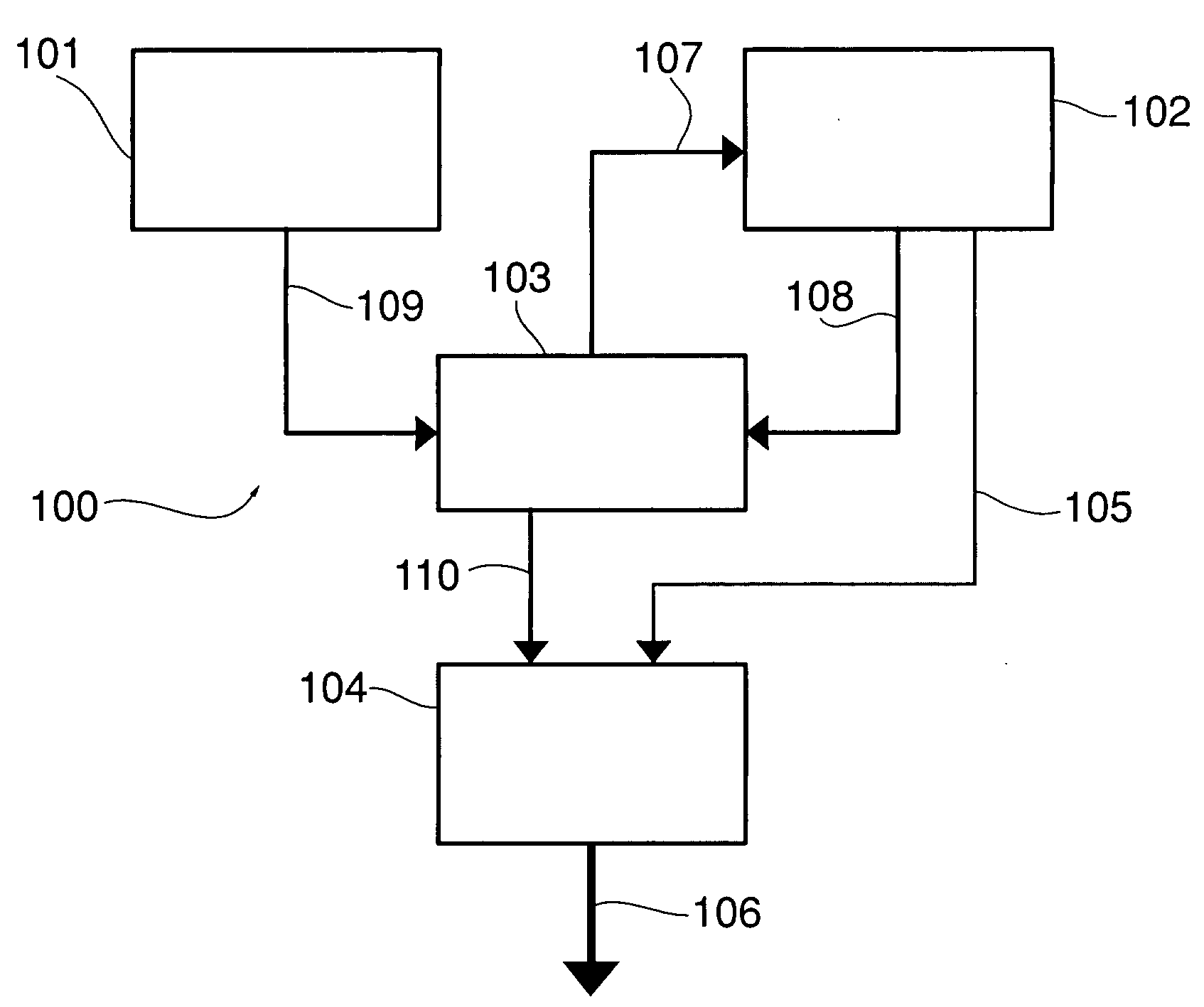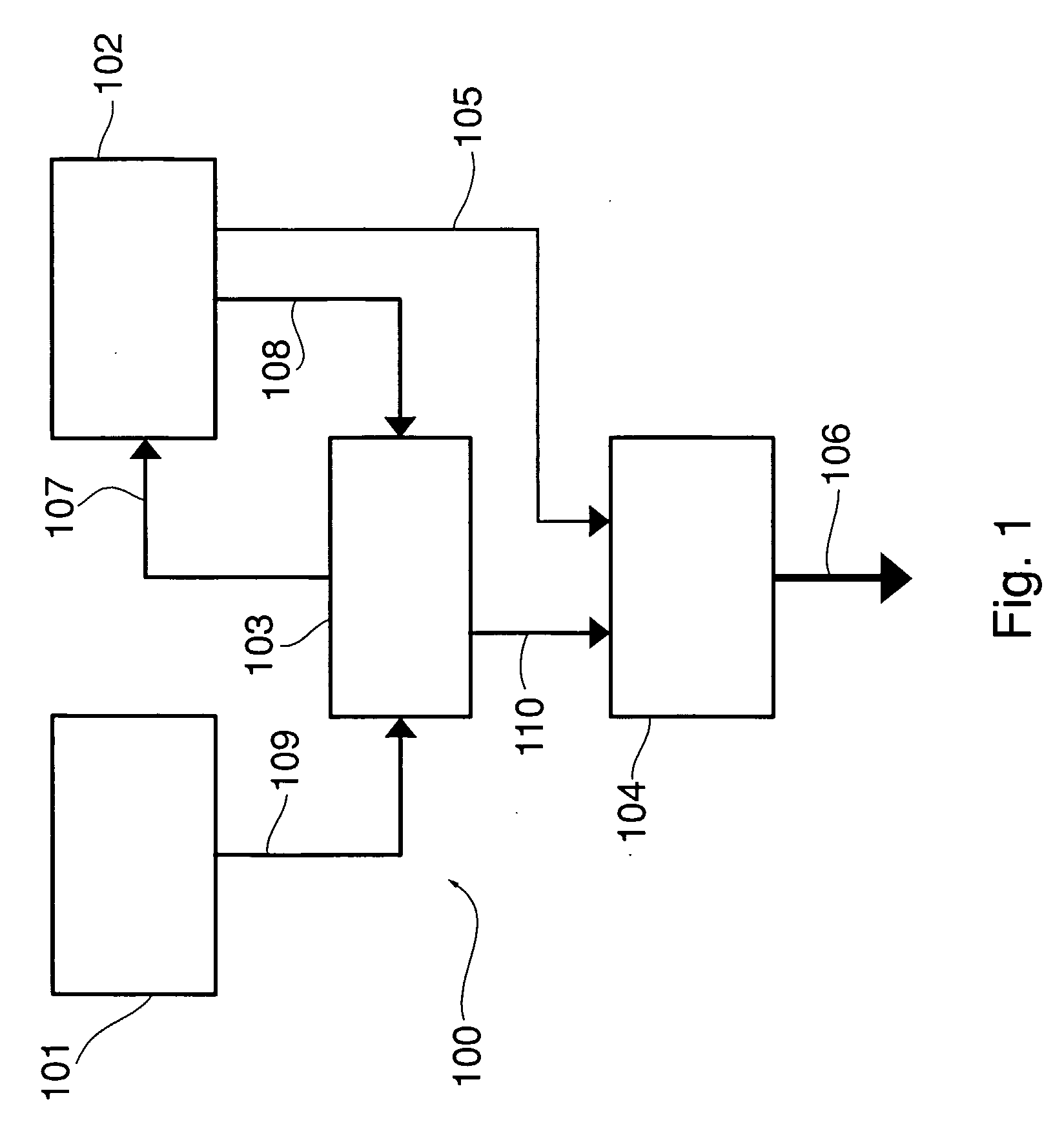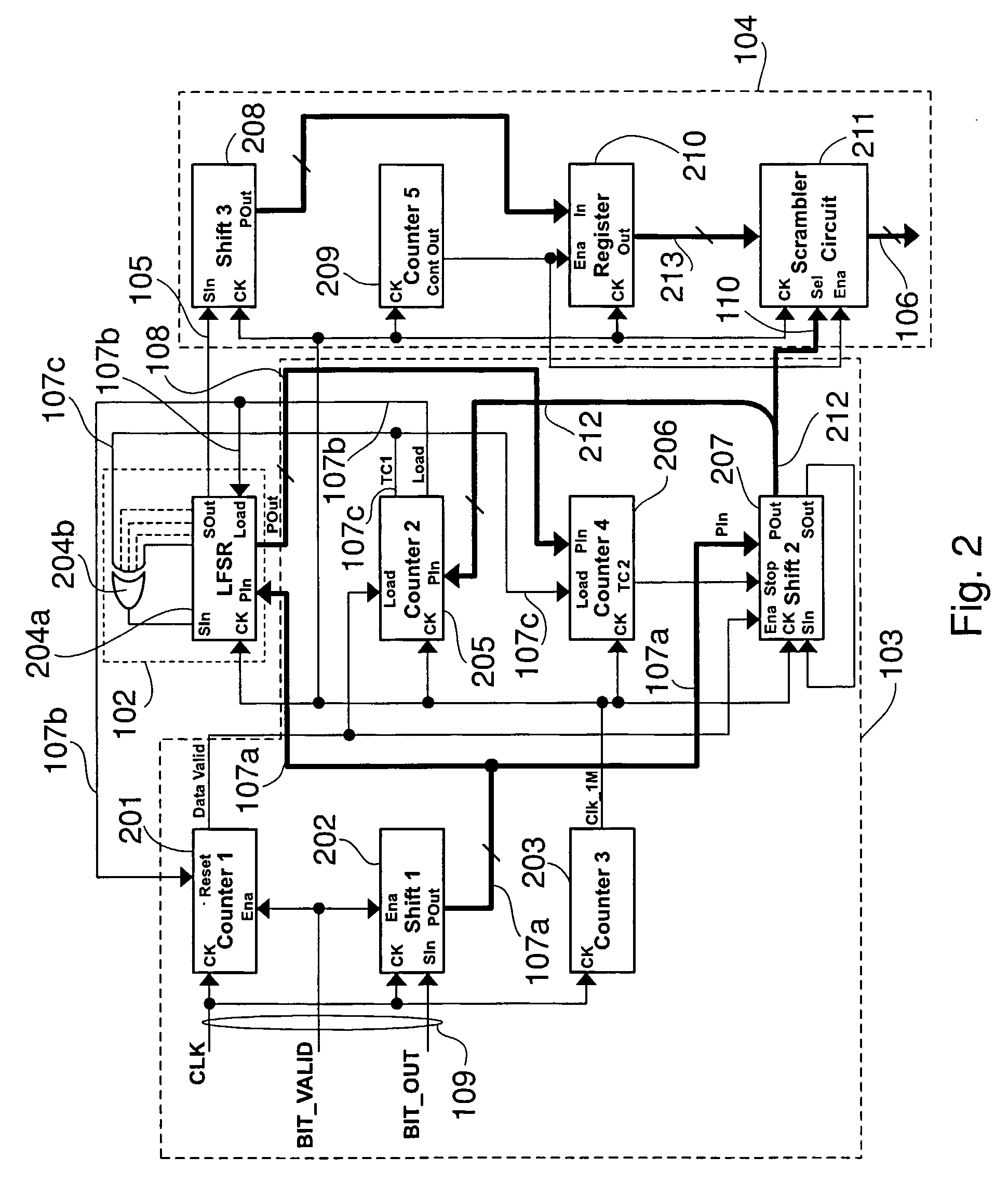Method and circuit for generating random numbers, and computer program product therefor
a random number and computer program technology, applied in the field of random number generators, can solve the problems of not ensuring a specified output bit rate, bit rate itself is not very high, and trngs are unsuitable for applications such as simulations, real-time cryptography e.g. in telecommunications, and achieve the effect of greater security
- Summary
- Abstract
- Description
- Claims
- Application Information
AI Technical Summary
Benefits of technology
Problems solved by technology
Method used
Image
Examples
Embodiment Construction
[0024]FIG. 1 shows the main functional blocks of the high speed random number generator according to the invention, generally denoted 100. Like the prior art generators mentioned above, generator 100 is based on the use of a True Random Number Generator (TRNG) 101 and a Pseudo-Random Number Generator (PRNG) 102.
[0025] TRNG 101 is the source of a sequence of random bits with variable bit rate, i.e. variable inter-arrival time, from which a random seed for the sequence generated by PRNG 102 is built. A mixing logic 103 receives the output sequence of TRNG 101, present on line 109, and obtains therefrom the random seed to be applied to PRNG 102 to introduce random alterations in its behaviour. An output logic 104 receives the serial stream issued by PRNG 102 on line 105 and provides a parallel output on line 106 by converting the 1-bit signal into words having a desired length. Output logic 104 may be controlled by mixing logic 103, as schematised by line 110, as explained in detail h...
PUM
 Login to View More
Login to View More Abstract
Description
Claims
Application Information
 Login to View More
Login to View More - R&D
- Intellectual Property
- Life Sciences
- Materials
- Tech Scout
- Unparalleled Data Quality
- Higher Quality Content
- 60% Fewer Hallucinations
Browse by: Latest US Patents, China's latest patents, Technical Efficacy Thesaurus, Application Domain, Technology Topic, Popular Technical Reports.
© 2025 PatSnap. All rights reserved.Legal|Privacy policy|Modern Slavery Act Transparency Statement|Sitemap|About US| Contact US: help@patsnap.com



